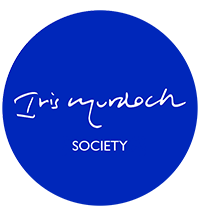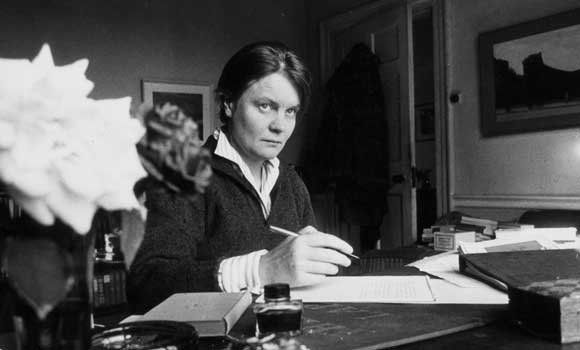The Lost Jerusalem
The publication of The Bell in 1958 was a watershed moment in Iris Murdoch’s career. Her first novel to sell in substantial numbers, it was widely reviewed internationally, with the vast majority of writers praising it for its deft character development and pacy action. Frank Kermode in the Spectator called it a ‘very notable achievement’, and John Betjeman in the Daily Telegraph was similarly impressed; it would set the standard by which Murdoch novels would be judged, culminating in her becoming one of the greatest of the post-war novelists. If you are reading in chronological order you move on to A Severed Head (1961), a gap of three years but not unusual for a writer who was also a full-time academic philosopher and notable public intellectual. Yet these three years were also filled with the writing of poetry and, of most interest perhaps, a novel tentatively titled ‘Jerusalem’.
Few authors write and subsequently publish their first attempted work, and Iris was no exception. Several novels were started and later discarded (almost certainly destroyed) in the late 1940s and early 1950s. We know very little about any of these save ‘Our Lady of the Bosky Gates’, which she decided to ‘chuck’ on 27 October 1949. What remains of this is a note in her journal where it is clear she is trying to work out a credo for her fiction, asking herself ‘What sort of novel shall I write?’:
Vague reduplications of my own situation must be rejected … A tale of someone making a choice! … Some simple frame. In form of a diary? (c.f. La Nausée) Half in Paris, half in London – some ex-lover confidant in Paris. The task – to break a liaison, achieve something intellectual? Introduce a ‘rub’ – of the Xavière variety? … Some cool other female in London. Light on relation with women. How shall religion come in?
Some five years before the publication of Under the Net (1954) we can see that several of the themes present in that novel are already starting to formulate in her mind. This was a hectic period for Iris; having been based in Cambridge for a year, she returned to Oxford and a position at St Anne’s College where she would happily remain for the next decade or so. She was also in the throes of grappling with her Christian belief, her growing scepticism concerning Sartrean Existentialism, and her rather rackety personal life prior to meeting John Bayley. ‘Bosky Gates’, Peter J. Conradi tells us in Iris Murdoch: A Life (2001), would have focused on ‘a semi-bogus spiritual seeker known as the Guardian who, having travelled to Tibet and met the Dalai Lama, finds he can communicate with the statue of a Greek goddess, possibly Aphrodite’. Other novels were similarly abandoned, perhaps as many as three or four, but the details of these are sadly fleeting. Frances White in Becoming Iris Murdoch (2014) tells us that:
She was always trying to write a novel alongside her work on philosophy and, paradoxically, she both lacked confidence in her talent and firmly believed that she would succeed. The note of uncertainty is strong in letters to her literary mentor Queneau: ‘I must try another novel soon. Anything I shall ever write will owe so much, so much to you. I wish I knew if I could write – shall find out by trying no doubt’ (15 February 1947). She wrote four or five novels which she never published – and subsequently destroyed – and she gives tantalizing glimpses of these still-born works:
I have started writing the novel about the Bogus Scholar and the Archaic Goddess which has been in my head so long, but doubt if I’ll finish it before the autumn. I’ll show it you, if it ever gets done. In idea at least, it’s a bit Queneau-esque. In execution – I don’t know. (17 July 1947)
She went on trying out new ideas for fiction during her year in Cambridge:
I’ve asked a bookseller to send you Carrington’s ‘Telepathy’ which may amuse you. His theory, though wrong I’ve no doubt, is interesting. (The novel I am writing – or ‘writing’ – now is based on an idea cribbed from Carrington!) (25 November 1947)
Lecturing and teaching philosophy at Oxford frustratingly stole time from her fictional efforts, ‘My current novel has been abandoned a long time now’ (17 February 1952). But she always had one on the go, and that it never ceased to be a matter of primary importance for her is clear from this despairing cry to Queneau, ‘When I shall write a novel again I don’t know & this after all is the only important thing’ (13 March 1951).
What we do have from this period is her unpublished poetry which may, when published, give us firmer ideas about her literary trajectory at this point in her career.
The publication of Under the Net in 1954 marked her out as a writer of substance and potential and, whilst The Flight from the Enchanter and The Sandcastle were not as critically well-received, The Bell cemented her reputation. But how was she to develop and move herself forward? From Conradi’s biography:
Back at Steeple Aston, Iris was writing throughout 1958 a novel entitled ‘Jerusalem’, about an old man, which ends with a Dublin episode; four of her next five novels have an Irish connection … By November, and publication of The Bell, her mood had swung. On John's advice she completed ‘Jerusalem’ but thought it – rightly – a work ‘without a heart’. This was the trades union novel she would refer to in interviews.
Iris had already experimented with Irish fiction with the publication of her only short story ‘Something Special’ in 1957 the year prior, so it may be that ‘Jerusalem’ was tangentially connected to that work. These quotations are taken from her unpublished journals of 1954-1964:
‘What is the matter is I think to do with being fed up with my work (& nauseated by the stream of imbecile praise of The Bell.) I feel, suddenly, sunk in a sort of mush of insincerity & imprecise thinking & facile success. I want to pull out of this. If I cd only see how to get, in my writing, out of the second class & into the first. I want to see the way upward, but cannot see it at present.’ (26th November, 1958)
On 7 January 1959 she writes that ‘I have stopped writing the Jerusalem novel. I don’t know whether I will ever finish it now. It seems a work without a heart. I have written a lot of poetry lately & really don’t want to do anything but that’, yet just a month later, on 5 February, we hear that she did continue working on it ‘I finished a draft of the Jerusalem novel, but know it is no good & have decided to [word crossed out] abandon it. Few regrets now, because I feel quite clear about it.’
Conradi believes Iris only completed ‘Jerusalem’ at the encouragement of John; these are the only two references to the novel by name in her journals. It is clear from these personal notes that the novel was not for publication, and in retrospect it seems odd that she didn’t destroy it as she had her previous unpublished works. Like her poetry notebooks and journals – all now housed at the Iris Murdoch Collections in Kingston University archives and available to view by appointment – this work was extant in the late 1990s when Conradi was writing his biography; indeed we only know as much as we do as he had the chance to read it as part of his research. When I spoke to him about it on the ‘Iris Murdoch Podcast’ in 2021 he had this to say:
What I recall is it was strung together by string with a fierce note on the front ‘Not for Publication Ever’. And I remember my heart sinking as I read it, I thought it was dreadful, actually. I think there are some posthumous publications which actually hurt the writer … none of the parts seemed to hang together. There was this sexually potent 80-year old hero … she [Iris] recreated Seaforth, her wartime flat, in the novel no doubt about it … there was a deaf-mute Irishwoman who ends the last scene in Dublin, there were these guild socialists who are involved in an ideal building, or an ideal town … she referred to it as her socialist novel … it didn’t gel, it didn’t come together. I was very very grateful that it had fallen by the wayside.
After reading the novel Peter returned it to Murdoch’s home at Charlbury Road, Oxford, where it was left in a drawer. The tantalising question is, does it still exist? When Anne Rowe and I visited in the summer of 2016 at Audi Bayley’s request, we turned up a range of unknown letters, photographs and printed materials but not, sadly, ‘Jerusalem’. Will it one day surface? If it does, it will be placed in the Kingston University Archives and will not, as per Murdoch’s request, ever be made available save to readers who wish to sit in the new Town House reading room.
You can listen to more from my discussion with Peter here: https://soundcloud.com/user-548804258/peter-j-conradi-podcast
Miles Leeson is the Director of the Iris Murdoch Research Centre at the University of Chichester.

